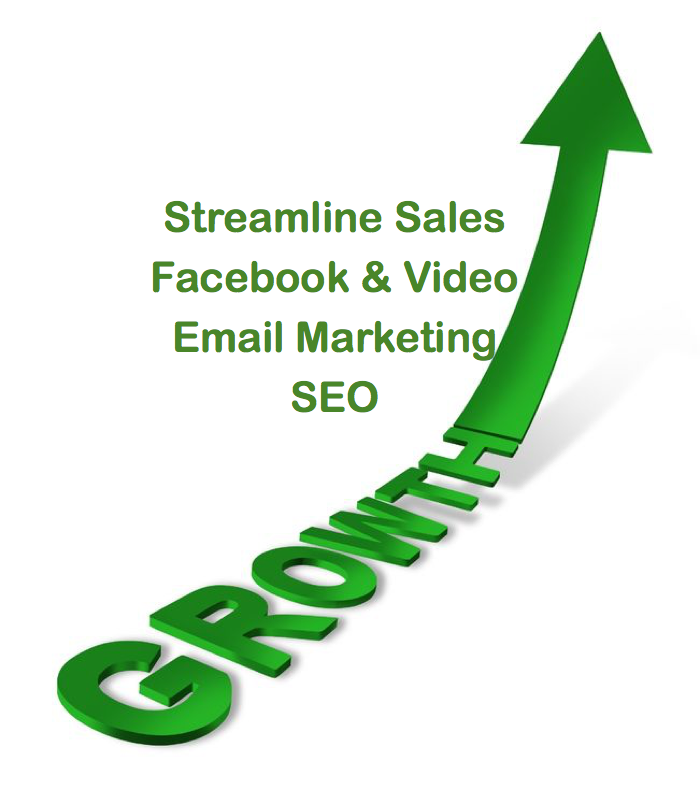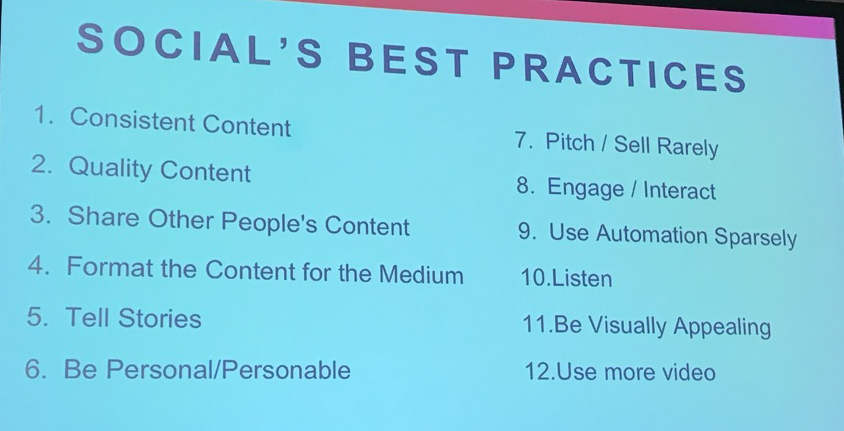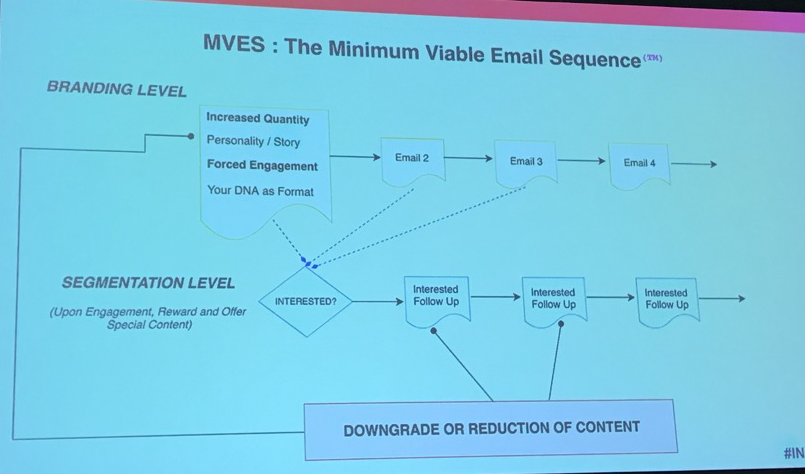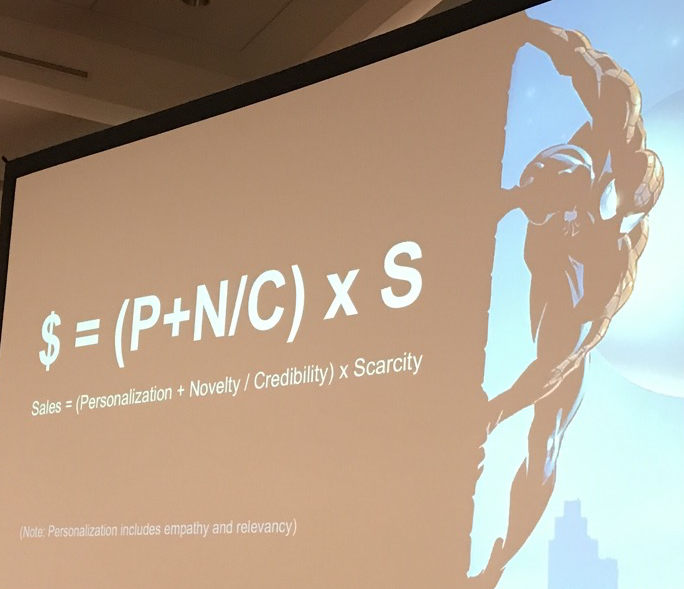
 I like to take the opportunity at the Inbound conference to learn new techniques to help businesses grow online. When I first looked at the Inbound 17 agenda, I was floored by the number of great sessions and I wanted to attend them all. Unfortunately, I do not own a time turner like Hermione used in the story, Harry Potter and the Prisoner of Azkaban to enable me to attend all of them!
I like to take the opportunity at the Inbound conference to learn new techniques to help businesses grow online. When I first looked at the Inbound 17 agenda, I was floored by the number of great sessions and I wanted to attend them all. Unfortunately, I do not own a time turner like Hermione used in the story, Harry Potter and the Prisoner of Azkaban to enable me to attend all of them!
I decided to focus on sessions that aligned with the most important methods that enable businesses to grow their business online. The most popular elements are Sales Enablement, Video Marketing, Facebook Marketing and Email Marketing. I also attended several sessions on Search Engine Optimization (SEO) since search engines change constantly and anyone that is involved in digital marketing must keep up.
| |
How to grow your business online |
| 1. | Streamline your sales team's productivity with sales enablement tools and methods |
| 2. | Employ facebook marketing to gain visibility with new targeted prospects with advertisements and engage them with video |
| 3. | Leverage the power of email marketing but don't spam your contacts, offer value with each outreach attempt |
| 4. | Keep up to date with the latest methods to improve search engine rank |
| 5. | Apply Inbound Marketing methods to attract and convert the right prospects |
Session by Oliver Lopez, CEO of Structsales
Marketing is selling and sales is marketing. A good sales rep is a good marketer and a good marketer is a good sales rep. Marketing is not helping. 65% of marketing content is not used by sales. I agree with Oliver's point! We published an earlier article that showed research that sales spends 31% of their time searching for content to use with prospects.
All of the info online gives the customer the ability to make many bad decisions. We know that the prospect has control of the sales process and if what Oliver says is true, much of the information is not helpful, yet it is still influencing the prospect. They still need sales reps more than ever to help them make the right decisions.
Bous Offer: Download the research report titled "Buyers Speak Out: How Sales Should Evolve In The Modern Age"
Why should sales care about all of this?
Too many sales people start with the product and push sales. Sales is thinking inside out because they don’t pay attention to buyer behavior. Sales must move from selling product -> to solution selling -> to insight based selling.
How marketers can help to improve sales productivity:
Getting teams work together improves performance. The solution is based on people, KPIs and clear roles.
Phil Knottingham, video strategist, gave a presentation titled "Making it rain with Facebook video." Phil was very knowledgeable and entertaining. He share examples of several on-line videos that, although being produced with very large marketing budgets, just flopped online. He gave an example of a video from Cisco. Although most brands are producing video for the on-line marketing, not many are doing it well. And now, most social media platforms are supporting video as a medium.
Crazy cats heading to #INBOUND17 - come see me rant about Facebook video, after the keynote from @MichelleObama. pic.twitter.com/tygEzfJeL4
— Phil Nottingham (@philnottingham) September 12, 2017
Approach the platform first when deciding which type of video to produce
One of Phil's most important points that I took away from his sessions is to approach the platform first when deciding what type of video to produce, how long it should be and the style of video. For example, people on Facebook are looking for entertainment.
As users scroll through their feed, you have a couple fo seconds to grab them. If you don't, they just scroll past. So much for all of the time and effort you put into your video! What's more, the majority of video on mobile is silent. So make sure it is also visually entertaining.
Phil also mentioned that Facebook is a "Pay to Play" platform which means that if you are looking to gain broad visibility for your video then you must create a paid advertisement since organic rank is minimal.
Phil's final bit of advice is to invest in a higher quantity of lower quality videos and experiment with them to see which ones gain the most attention. Good advice indeed.
The session about the minimal viable email sequence presentation by Arvell Craig was chock full of statistics about the effective use of email for marketing and the reasoning why emails succeed or fail. He started with statistics and then described the most common considerations:

Improve engagement with the Minimum Viable Email Sequence
The following image shows the model Arvell describes as the MVES. He suggest the following model for email:

Quantity - to get more out of email is to send more.
One of the resources he recommended is a site called Nifty Images for embedding dynamic images into emails. I think this is a really cool idea, especially since with most outbound email you know the name of who you are sending it to.
Arvell's summary is to encourage us to:
Another email session was from my friend Jeff Coon, a Partner at Stream Creative. I have had a discussion with Jeff during a sales lion training session hosted by Hubspot and love what he has done. The short version if his technique is to create custom sales pages as a way to deliver proposals to clients. The sales pages include personalized text and video and describe the value the client would receive by working with him. Here is an example of one of their sales pages targeting a fictional prospect which they created as a sample for the Inbound 17 conference.
How science based emails produced more success
If you have an equation, it must be true, right? Well, Jeff used this equation to describe influence = ((personalization plus novelty) divided by credibility) times scarcity equals effectiveness (measured by $). See his image below.
So, all Jeff needs to do in his email is to get the recipient to click on the link to their proposal, which they will do if you have spoken to them. Once they do, the sales page (see the link above) provides a unique and personalized proposal. It is clearly novel since most companies are not using this technique. He and his agency is credible and they are unique in their approach which makes them a scarce resource.

Delivering proposals this way makes you feel like a mind reader!
For those of you who may not have the ability to create custom sales pages but want a similar way to create custom multi-media proposals for your prospects, then consider using a digital proposal and document tool like Pandadoc.
We use Pandadoc in the same way that Jeff uses sales pages, inclusive of text, video, and other techniques to create a personalized engagement. Metrics like, time on page, number of opens are also provided so you know if they have viewed and how much time they spent with your proposal. Pandadoc has the added benefit of providing digital signature for the proposal as well. So you deliver a personalized proposal and gain an executed agreement at the same time.
Download this offer now: 8 Steps to Attract Qualified Leads For Your Business
Laurie (Aquilante) Fabiola from Hubspot shared their approach to overhaul email nurturing. Their work doubled conversion rates, wow! First, let me define what lead nurturing is and why you should do it.
Pumped to talk about #leadnurturing at #INBOUND17 let's do this! pic.twitter.com/B3ASJt7Aq7
— Laurie Faiola (@lawfaiola) September 27, 2017
Lead nurturing through email is a method of sending emails to people who complete a form on your website to encourage them to engage with other content on your website or request to talk to your sales team about your products or services. Why would you want to nurture using email? Because, sending out periodic and valuable information, especially once you have learned what the prospect is showing interest in, keeps your business top-of-mind until the visitor is ready to engage with your business.
The benefits of lead nurturing are many. Prospect convert to customers faster and invest more in your products or services. It is a process that moves visitors down their buyers journey for information. It helps to educate the prospect, especially with your message and differentiation in mind. Nurturing should always be personal, helpful, timely and human.
Laurie share several good nurturing examples. Uber nurtures people who begin the sign-up process but do not finish it by sending them an email that says, they made $0 this week and reminds them to finish signing up. They then offer objection handling by offering insurance which is one important objection to becoming an Uber driver. Spotify tells you your most favorite songs they then pop up relevant content depending upon where you live, for example local concerts by the artist.
The 4 strategies Hubspot used to improve conversion rates:
Start by sending the lead nurturing emails from the sales rep - doing this automatically from the hubspot owner of the contactWhat does that mean for you?
One of my favorite speakers at each Inbound conference is Rand Fishkin. Rand gave a spotlight presentation titled "The invisible Giant that Mucks Up Our Marketing. The slides of his presentation are embedded here so you can flip through them.
The short story is that the "Big Giant" is cultural conditioning. He went on to say that marketing must be measurable. But there are easy to measure marketing factors like PPC, Social Media advertising, visitors, contacts, and more. There are hard to measure metrics like word of mouth SEO, organic social, PR and others. The easy to measure items are easy because there are large and powerful corporations that make them easy to measure. If you want to make it easy for people to advertise (and spend money on it) then you have to make it easy for them to measure.
The solution is to invest a portion of your marketing into hard to measure marketing channels. I think this goes to channels that may currently yield low results like Google Plus. I suggest clients create a Google Plus page just because we don't know how Google may use that channel as a factor in search in the future. Whatever the marketing channel, have some idea for the reach it provides you and measure the results over time. This advice is espeically valueable if you can automate some of the share into that channel.
Rand told a story about the very popular Whiteboard Friday series he does about SEO. I admit that I am a Whiteboard Friday addict! I look to learn just one thing each Friday. His notice comes up on my LinkedIn feed and I take the time immediately to watch it. Back on his key point, he mentioned that the WhiteBoard Friday series was his worst performing blog each week. However, they kept on investing in it and it became the highest ROI channel for Moz. We are conditioned to think that if we do not see an initial positive trajectory in a marketing investment then it must be ineffective. Now Whiteboard Friday is the most valuable asset on Moz.
Search ranking factors are new. They now focus on searcher task accomplishment. Good search results solves the viewers problem. Rand further reccomended to look at your site and enhance pages that are performing well and remove pages with poor visit results. You can redirect removed page URLs to better performing pages with similar content.
Rand summarized his talk by saying, the next time to make a strategic marketing decision, ask yourself how is cultural conditioning is biasing your decision.
The next SEO presentation was by Matthew Barby of Hubspot. Matthew is Hubspots top SEO expert. I loved his presentation. He said that there are new case studies every week about how to improve traffic to your website. Organic search performace is not an exact science. If you rank number one in google search for a resource on your website you typically see a 27% click-through-rate for the term. And that CTR drops down when paid ads jump above the organic search results. So his point is that ranking organically is becoming more and more difficult.
A real life example is to gain really nice stable incremental organic growth for pages on your website. Organic search performance takes time and there is an enormous amount of time and investment required to make organic work. But keep in mind that sometimes things happen that are out of your control. One example is when google removed a featured snippet for search for one of Hubspot's site page. The page was originally generating a lot of traffic. But one day that traffic dropped precipitately. That is because they shifted the snippet to another asset on some other web page.
Matthew broke down the way to think about organic search results by Authority, Relevancy and Discovery. He offers some guidance about how to become effective with it.
Most SEO campaigns begin the wrong way. They start by building a bunch of content, but traffic does not grow. Why? Because making three different types of a shitty meal wont make it taste better! Businesses should work first on domain authority with backlinks and then slowly build high quality content to grow rank.
Examples of how Hubspot improved their search results
 The Inbound 17 conference was a tremendous event for me. This summary is just a sampling of what I learned. I certainly got a tune up! I have had such a great experience from Inbound that I have already signed up for Inbound 18 next year. Remember that the continuous improvement portion of the 7 habits of successful people is to Sharpen The Saw. Continual learning is one of the most important elements that will make you great at what you do. Discover what you love to do and continually learn about it. I love helping businesses grow and in this digital world, implementing techniques that create engagement with your target audience is essential for success. And this applies to sales and marketing.
The Inbound 17 conference was a tremendous event for me. This summary is just a sampling of what I learned. I certainly got a tune up! I have had such a great experience from Inbound that I have already signed up for Inbound 18 next year. Remember that the continuous improvement portion of the 7 habits of successful people is to Sharpen The Saw. Continual learning is one of the most important elements that will make you great at what you do. Discover what you love to do and continually learn about it. I love helping businesses grow and in this digital world, implementing techniques that create engagement with your target audience is essential for success. And this applies to sales and marketing.
Reach out to Bristol Strategy to speak about how to improve your ability to engage your ideal prospect in this digital world.
Growth Image Copyright: lightwise / 123RF Stock PhotoAsk us about our unique approach that creates a full-funnel "inbound" engagement model for your business that attracts and converts digitally engaged prospects.